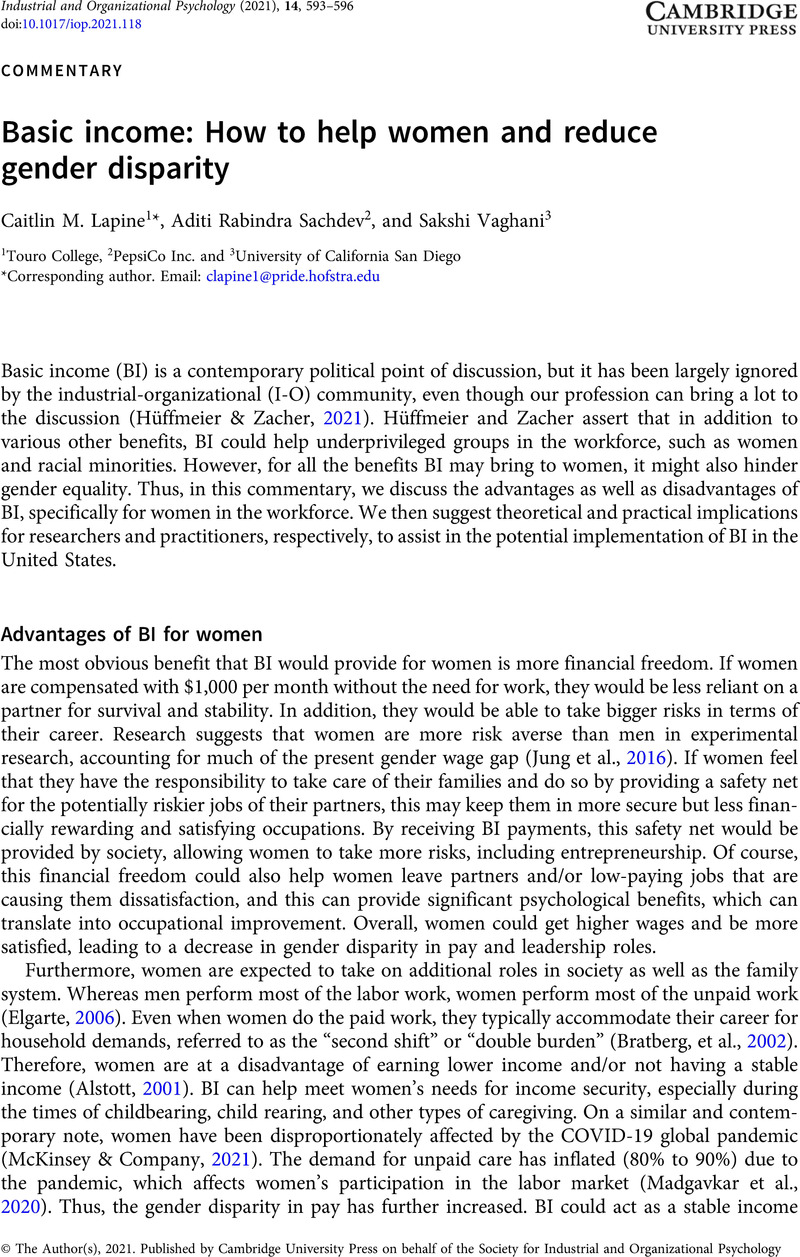No CrossRef data available.
Article contents
Basic income: How to help women and reduce gender disparity
Published online by Cambridge University Press: 14 December 2021
Abstract
An abstract is not available for this content so a preview has been provided. Please use the Get access link above for information on how to access this content.

- Type
- Commentaries
- Information
- Copyright
- © The Author(s), 2021. Published by Cambridge University Press on behalf of the Society for Industrial and Organizational Psychology
References
Alstott, A. (2001). Good for women. In Cohen, J. & Rogers, J. (Eds.), What’s wrong with a freelunch? Beacon Press. 186–188.Google Scholar
Ando, J. (2015). Social norms, gender identity, and high-earning wives’ housework behavior in Japan: An identity economics framework. Japanese Political Economy, 41(1–2), 36–51. http://dx.doi.org/10.1080/2329194X.2015.1105675
CrossRefGoogle Scholar
Bratberg, E., Dahl, S., & Risa, A. E. (2002). “The double burden”: Do combinations of career and family obligations increase sickness absence among women? European Sociological Review, 18(2), 233–249.10.1093/esr/18.2.233CrossRefGoogle Scholar
Eagly, A. H., & Wood, W. (1991). Explaining sex differences in social behavior: Ameta-analytic perspective. Personality and Social Psychology Bulletin, 17(3), 306–315.10.1177/0146167291173011CrossRefGoogle Scholar
Elgarte, J. M. (2006, November 2–4). Good for women? Advantages and risks of a basic income from a gender perspective [Paper presentation] The 11th Basic Income Earth Network Congress, Cape Town.Google Scholar
Huffmeier, J., & Zacher, H. (2021). The basic income: Initiating the needed discussion in industrial, work, and organizational psychology. Industrial and Organizational Psychology: Perspectives on Science and Practice, 14(4), 531–562.Google Scholar
Jung, S., Choe, C., & Oaxaca, R. L. (2016). Gender wage gaps and risky vs. secure employment: An experimental analysis. Institute for the Study of Labor (IZA) Discussion Papers, No. 10132.Google Scholar
Madgavkar, A., White, O., Krishnan, M., Mahajan, D., & Azcue, X. (2020). COVID-19 and gender equality: Countering the regressive effects. McKinsey Global Institute.Google Scholar
McKinsey & Company (March, 2021). Seven charts that show COVID-19’s impact on women’s employment. https://www.mckinsey.com/featured-insights/diversity-and-inclusion/seven-charts-that-show-covid-19s-impact-on-womens-employment#
Google Scholar
Schober, P., & Scott, J. (2012). Maternal employment and gender role attitudes: Dissonance among British men and women in the transition to parenthood. Work, Employment and Society, 26(3), 514–530.10.1177/0950017012438577CrossRefGoogle Scholar




